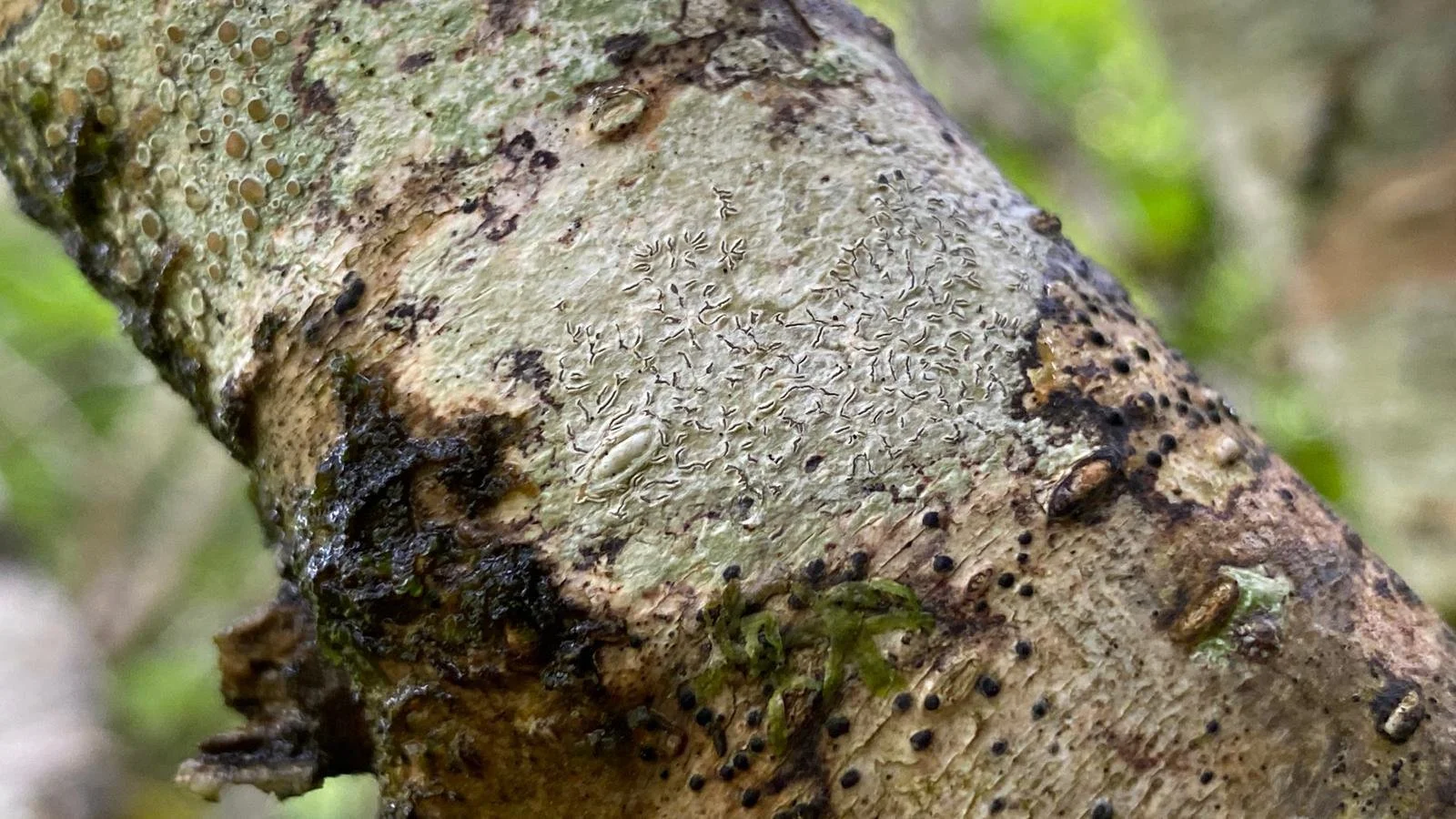Lichens and fungi
Lichens might look like plants, but they’re actually a symbiotic organism made up of a fungus and something else. The second part of a lichen (called a photobiont) is usually algae but sometimes it’s a tiny organism called cyanobacteria. These photobionts photosynthesise, producing food from the energy of the sun. The fungi portion of a lichen can’t photosynthesise, but instead they offer protection, and stop the photobiont from drying out.
By teaming up like this, it means that both partners involved in the lichen symbiosis can live in more places than they would otherwise be able to on their own. You’ll find lichens on walls and pavements, and in parks and gardens, but Scotland’s rainforest is important for lichens, as they can grow there undisturbed in the clean air and damp environment.
Over 500 different types of lichen can be found in these warm, wet woods. Some are extremely rare, not only in the UK, but in Europe and even globally! Scotland has an international responsibility to look after about 120 lichens associated with old-growth woodland. Many of these are incredibly beautiful but you often have to get up close to appreciate them.
As well as lichens, Scotland’s rainforest also has a wonderful range of fungi. Fungi aren’t plants, they’re actually in a kingdom all of their own. Many are common to woodlands across the UK, but some are only found in the rainforest, such as the hazel gloves fungus. If you see this growing on an old hazel tree, it’s a sure sign that you’re in an ancient woodland, and that the air you’re breathing is very clean.
Octopus suckers
This is what’s called a ‘jelly lichen’ and it’s nationally rare. When it’s wet, it looks exactly like octopus suckers, but the suckers are actually clusters of fruiting bodies called apothecia. Look for it growing on oak trees. (Credit Andy Acton, British Lichen Society)
Tree lungwort
An indicator species for ancient woodland, tree lungwort is one of the most impressive and important species of lichens in Scotland’s rainforest. It grows on mature trees, mostly oaks and ash, and while it was once widespread in the UK, it’s now mostly restricted to Scotland, and particularly the north and west. Tree lungwort is bright green with red fruiting bodies that look rather like berries. It can grow very large if the conditions are right.
White script lichen
The white script lichen grows on the smooth bark of hazel trees. It has only been ever been found in the ancient hazel woods of Scotland’s rainforest, which probably means that this is the only place it grows in the whole world. It gets its name from distinctive black markings, which look a bit like scribbles. (Credit Alasdair Firth)
Hazel gloves fungus
This odd-looking fungus looks like fat, orange fingers, and feels like soft leather. As it also grows exclusively on hazel trees in the UK, it’s not hard to see where it gets its name from! You’ll only find it in the rainforest, and it’s another ancient woodland indicator species.
One of the curious things about hazel gloves is that it’s not a parasite of hazel trees. It actually parasitises the glue crust fungus (picture below) which sticks hazel branches together and feeds on decaying wood.
Other lichens and fungi of the rainforest
You’ll find more lichen resources on the website of the British Lichen Society.





















